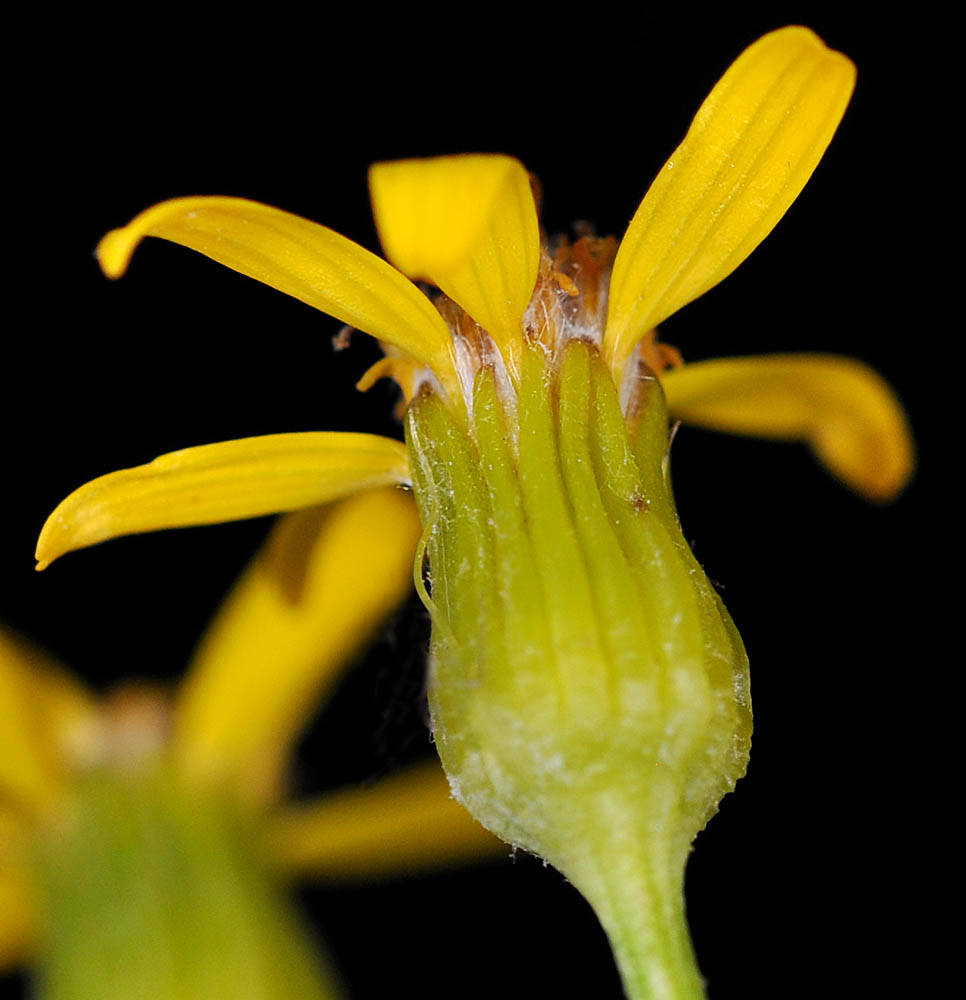Packera glabella
Packera cana
woolly groundsel
1, densely tomentose or canescent.
blades ovate or elliptic to lanceolate, bases tapering;
margins entire, irregularly undulate, or weakly dentate;
surfaces abaxially persistently lanate-pubescent, adaxially lanate to glabrate, petiolate.
similar to basal; upper gradually reduced, petiolate or sessile and weakly clasping.
campanulate.
8–10(13);
rays 8–10+ mm.
35–50+;
corolla tubes 2.5–3.5 mm;
limbs 3.5–4.5 mm.
13 or 21, 5–8+ mm, green;
surfaces densely tomentose.
inconspicuous;
surfaces tomentose.
2.5–3.5+ mm, glabrous;
pappi 4.5–7 mm.
8–15+; in corymb-like arrays, radiate;
peduncles usually densely lanate, sometimes glabrate, bracteate.
=46, 92.
Packera glabella
Packera cana
Open plains, sagebrush, dry rocky slopes, crevices in granitic and limestone outcrops. Flowering May–Aug. 0–3000 m. All ecoregions except WV. CA, ID, NV, WA; north to British Columbia, northeast to Manitoba, east to MN, southeast to NM. Native.
Packera cana grows in a wide variety of habitats. Vegetative morphology is relatively uniform throughout the range, except that alpine specimens are notably dwarfed and often mistaken for P. werneriifolia, which differs by its scapiform habit. In Oregon, P. cana can also be mistaken for P. macounii. However, the latter is not consistently canescent and has a taprooted caudex and leaves that are narrower and frequently revolute. Several specimens in Curry and Josephine counties that have been reported as Packera cana are more likely P. macounii as they are cited as growing on serpentine.
Debra Trock
- Local floras:
BC,
CA,
OR,
WA
- Local Web sites:
CalFlora,
CalPhotos,
Flora NW,
PNW Herbaria,
Turner Photog.
WildflowerSearch
iNaturalist (observations)
USDA Plants Database
- LBJ Wildflower Center
- SEINet
- Plants of the World Online
- Encyclopedia of Life
- Wikipedia
- Google Image Search



